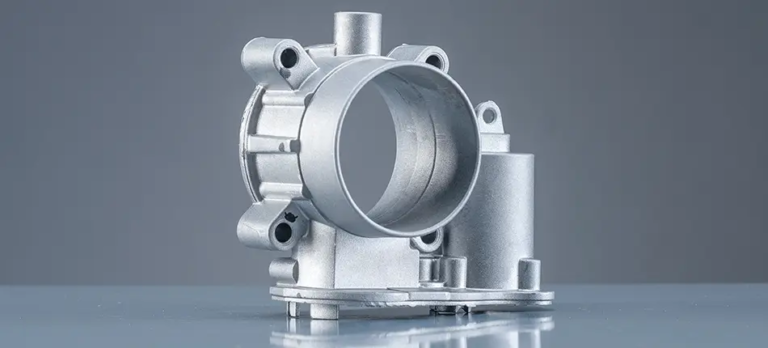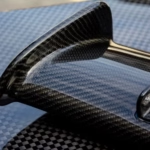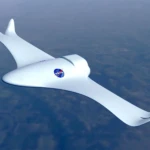Unlocking precision manufacturing: 3-axis VMC
In the ever-evolving world of manufacturing, precision and efficiency are not only goals, but also absolute necessities. This is where CNC (Computer Numerical Control) is processed, and the game is revolutionized and manual operation is replaced with automatic accuracy controlled by complex software. In this field, a main force always stands out: 3-axis vertical machining center (VMC). Whether you are designing complex aerospace components or complex medical devices, understanding this fundamental technology is key. In addition to the basics, we will explore Why These machines are still essential, especially when working with advanced manufacturers, like Greatlight Who pushes up precision boundaries every day.
What exactly is a 3-axis VMC?
Let’s break it down by semester. "Vertical" Point to the machine direction: Hold the cutting tool and rotate the cutting tool’s spindle perpendicular to the workbench. "Processing center" It shows that this is a completely enclosed automatic CNC machine that combines milling, drilling, boredom, hitting, etc. into a multifunction unit. this "3 axes" Define its core movement:
- X-axis: Level from left to right.
- Y-axis: Levels before and after.
- Z-axis: Vertical up and down (spindle motion).
Think of it as a high-speed robot arm that accurately positions the cutting tool anywhere in a defined cubic workspace. The workpiece sits on a rigid table, while the spindle is equipped with a sharp rotating tool that moves through its axis to engrave the metal as directed.
Key components that drive their functions
- Strong framework and foundation: Cast iron structure ensures rigidity and vibration suppression.
- Vertical spindle: High RPM precision motor drives cutting tools into metal.
- Multi-tool turret/automatic tool changer (ATC): Hold dozens of cutting machines, automatic exchange of tools, without manual intervention.
- Precisely guided slides and playback: Converts a digital command to precise micron motion along all axes.
- CNC controller: Converts the G-code tool path generated by CAD/CAM into a coordinated mechanical action.
- Work Holding System: During machining force, uniform fixtures or fixtures securely secure the parts.
- Coolant system: The high-pressure coolant flow manages heat as it flushes the chip.
Why choose 3-axis machining? Top 8 Strategic Interests
With easy-to-use alternatives like available routers or manual mills, why invest here? Consider these compelling advantages:
Extremely high accuracy and accuracy: VMC tolerance is reduced to ±0.001" (More tighter). They transform the blueprint into geometrically perfect parts – one after another.
Higher production efficiency: Automation features such as ATC enable continuous 24/7 operations. Rough, semi-virtual, finishing and metering may be performed in order Unattendedmaximize throughput.
Excellent surface: Rigid construction and high spindle speed allow for smooth, polished finishes directly from the machine. Less labor is less!
Material versatility: From aluminum alloys and stainless steel to titanium or engineering plastics, the 3-axis VMC elegantly handles all tool selection and RPM adjustments.
Consistency and repeatability: Once programmed and set up, your #100 parts will exactly match #1. It is crucial for high volume orders without bias.
Complex functional processing: Slots, pockets, holes, bends, threads – In one setup, any function that can be achieved in a prism-shaped part is feasible. Reduce attribution steps or secondary actions.
Strong ROI Potential: Compared to the higher CNC types, 3-axis provides significant ingress cost advantages while still automating complex tasks. Tools/maintenance expenditures are also usually low.
- The gatekeeper of advanced manufacturing: Learn 3-axis workflows to drill more demanding techniques before organic profile machining.
Combining application advantages with opportunities
Across the industry, standard applications show enormous capabilities:
- car: Engine block, transmission, suspension arm, fuel injector.
- aerospace: Aircraft support, valve body, structural reinforcement.
- Robotics: Actuator housing, final effector, cable guide.
- Medical: Implant drill plate, instrument box, surgical tool fixture.
- Industrial Equipment: Hydraulic pump base, compressor housing, mold cavity.
Limitations are important. According to the design, 3-axis machining covers part of the geometry Tool access Mainly top-down. Undercut, complex curves are accessed only from side angles or organic shapes (curved blades/impellers), benefiting from higher axis solutions that Greatlight is really good at, but will benefit a lot soon.
Tactical efficiency? Perfect prototype, leverage-like simplicity, tolerances allow for lower cost per unit… These are "Three axes" Continue to flourish.
Select great highlights: Excellent fusion of 3-axis and 5-axis
Then why with Five axis Experts during discussion three-axis? Because realizing your vision requires the most expertise to solve the solution, not just compliance. exist Greatwe know that accuracy is not accidental, it is designed.
3-axis handle batch-volume tasks with compelling ROIs and excellent precision results, but we use advanced to actively collaborate process chains Dual spindle five-axis CNC machineryleverages multi-angle accessibility to eliminate settings and greatly reduce lead time. Workflow decisions brought by rich engineering insights are critical to optimizing cycle time, cost and partial integration:
- Use the low cost efficiency of 3-axis machining for prismatic or less complex tool paths? Yes!
- Deploy from a policy Five-axis simultaneous machining Lower axis cannot arrival? Absolutely.
- Handling foreign alloys Does your mold store refuse? Consistent, confident.
From deep milling ports of hardened stainless steel to delicate aerospace characteristics, surface roughness consistency is required RA0.4μmour team is moving forward where others hesitate. This is the value of scale, dedicated R&D testing, strict tool monitoring protocols and the ruthless improvement culture in our facilities One-stop precision: Processing, finishing, coating, assembly. your Complex metal parts prototypesor launching over 100,000 units – all of which benefit from uncompromising GD&T compliance. Customized materials? Quick tool verification? We say yes enthusiastically.
in conclusion
3-axis VMC is a proven powerful force: a versatile, easy to access and impressive tool. Despite revolutionary trends, strategic deployment drives cost-effective output even today. However, complex components are increasingly in need of synchronized multi-axis solutions – requiring partners in the in-depth process of innovation Great.
Whether your project requires a strong 3-axis production line or strategically incorporates advanced five-axis strategies to address impossible cuts, Great Provides vital fusion – retrieve from optimized raw materials to perfect final finish. Trust the professional review you deserve. Every axis we move is guaranteed by quality.
Ready to experience precision without compromise?
Now priced custom metal parts dominated by competitive intelligence – related to engineering insights.
Frequently Asked Questions about 3-axis VMC (FAQ)
Q1: How is the difference between a 3-axis VMC and a mill or router?
A1: Glue simplicity of CNC routers. Manual mill requires operators to attend each tool change. By comparison, VMC Features are closed automatic machining centers designed for metals: tool hand-change, coolant system, rigidity for manufacturing forces and position repeatability of servo drives. Industrial-grade evolution for 24/7 elastic design.
Q2: When should I choose 3-axis instead of multi-axis CNC machining?
A2: For geometric prismatic parts, tool access will follow "Top angle"- Think of a flat plate with pockets and holes – 3-axis may most effectively achieve the target results. Multi-axis is to reduce the setup or deal with multi-surface profiles (organic/unbalanced shapes).
Q3: What material restrictions exist in a typical VMC machine?
A3: Correctly specified VMC treatment stainless steel, titanium alloy, tool steel harden it to HRC 65, aluminum grade, brass/bronze composite, utilizing proper cutting tools, horsepower and coolant strategies. Pre-discuss the tool with your manufacturer – Temperature Management Plan.
Question 4: How accurate is a typical VMC relative to my ideal tolerance target?
A4: Modern settings implement ±.0005" Keep consistency, it’s OK ±.0002" During calibration, for example, detection. Aerospace projects often exceed this. Identify key dimension tolerances.
Q5: Can a 3-axis machine engrave task details?
A5: Absolutely. Fine engraving details are paired with professional particulate carbide cutting machines and commercial CAD/CAM systems, with clear fonts less than .020". Ensure rigidity and stability requirements meet specifications.
Question 6: Why choose Greatlime over other manufacturers?
A6: Experience – We innovate five-axis machining applications every day – Age often utilizes optimized chains, combining separate subprocessing by strategically utilizing the multi-function 3-axis store. Our deep metallurgical insights contribute to bridge design goals; One-stop service Eliminate production barriers involving completion, surface treatment or inspection. Simplify precision while ensuring timelines competitively.
Question 7: How successful is VMC processing batch parts production?
A7: They dominate industrial demand. Once verified by the first article inspection report, hundreds, thousands of automated cutting runs can be reliably delivered with minimal human operation cycles, affecting safety cost or quality stability indicators.

















